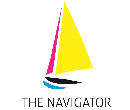- Time£º2018/1/11Posted£ºT & N Industrial / Foshan Linghang Colour Printing Co.,Ltd
In the printing process, continuous and halftone images are adjusted by the density of branches. By mixing CMYK four-color dots, you can display an infinite number of colors. The basic concepts of the network include network mode, dot size, dot shape and dot Angle.
At present, there are two different types of outlets used in printing process: AM and FM.
[extended reading] : the network network method of network network.
AM outlets (Amplitude Modulated Dot, AM outlets) is currently the most widely used a network. Its dot density is fixed, by adjusting the size of the dot to show the color of the depth, thereby achieving the tonal transition. In the printing, the use of the mesh point needs to consider the dot size, dot shape, dot Angle, network line accuracy and so on.
The appearance of Frequency Modulated HalftoneDot (FM dot) and its advantages in solving the problems such as the power of the solution, the non-turtle pattern, and the combination of graphic and text are widely recognized by the printing industry. With the improvement of materials and supporting technology, it will become a major network mode that is superior to traditional FM.
FM network is a new developed since the 90 s a way of screening, it and am points difference: FM dot dot size is fixed, it is implemented by controlling the intensity of the network order. Bright modulation part of the network sparse, the dark part of the node density.
Routine screening technology is change the size of the network method to represent the continuous tone of the original color and level of change, to change the size of the network corresponding to the amplitude modulation (am) radio technology, for this reason, people after the onset of FM screening technology will regular network called the amplitude modulation and network technology network.
Dot size is determined by the coverage of the dot, also known as the inking rate. Traditionally like to use "into" as a general measure unit, such as the 10% coverage of the network is called a "ten percent points", 20% coverage network called "twenty percent points" in addition, the coverage rate of 0% network known as the "net", 100% coverage network known as the "field".
[extended reading] : the dot size of the network base.
The order of printed matter is generally divided into three levels: bright, intermediate and dark. The dot coverage of the bright part is about 10% ~ 30%; The dot coverage in the middle part is about 40% ~ 60%; The dark part is 70 to 90 percent. The net and the field part are separate.
Printing dot shape is not only in the circular alone a everybody imagination, with a 50% rate of lis cases points of shape, can be divided into: square, circular, three kinds of diamond.
[extended reading] : the shape of the mesh point of the network.
The square dot is a checkerboard with 50% coverage. It has a sharp particle and a strong ability to perform at the level. Suitable for lines, graphics and some hard - tone images.
In the case of a round dot, whether in the light or in the middle, the branches are independent and only partially connected in the case of dark tones. Therefore, the performance of the mining level is not good, and the four-color printing is less used.
The rhomboid dot combines the soft tone characteristics of the square dot, and the color transition is natural, which is suitable for the general image and photo performance.
In the printing plate, the choice of the point Angle is of vital importance. Choose the wrong dot Angle, will appear interference fringes.
The common outlets are 90 degrees, 15 degrees, 45 degrees and 75 degrees. At 45 degrees, the network is the best, stable and not dull. The Angle stability of 15 degrees and 75 degrees is less stable, but the visual effect is not dull; The 90 degree Angle is the most stable, but the visual effect is too mechanical, there is no aesthetic feeling.
[extended reading] : the point of view of the network node.
There are two or more branches together, and there will be mutual interference. When the interference is serious enough to affect the beauty of the image, it will be known as the "turtle tattoo".
Generally speaking, the Angle difference between the two branches is 30 degrees and 60 degrees, and the overall interference fringe is beautiful. The second is the Angle difference of 45 degrees; When the Angle difference between the two branches is 15 and 75 degrees, the interference fringes will damage the image.
The above is the concept of the basic elements of the network. In the traditional printing process, the four seemingly simple elements of the network restrict the quality of printed matter.

